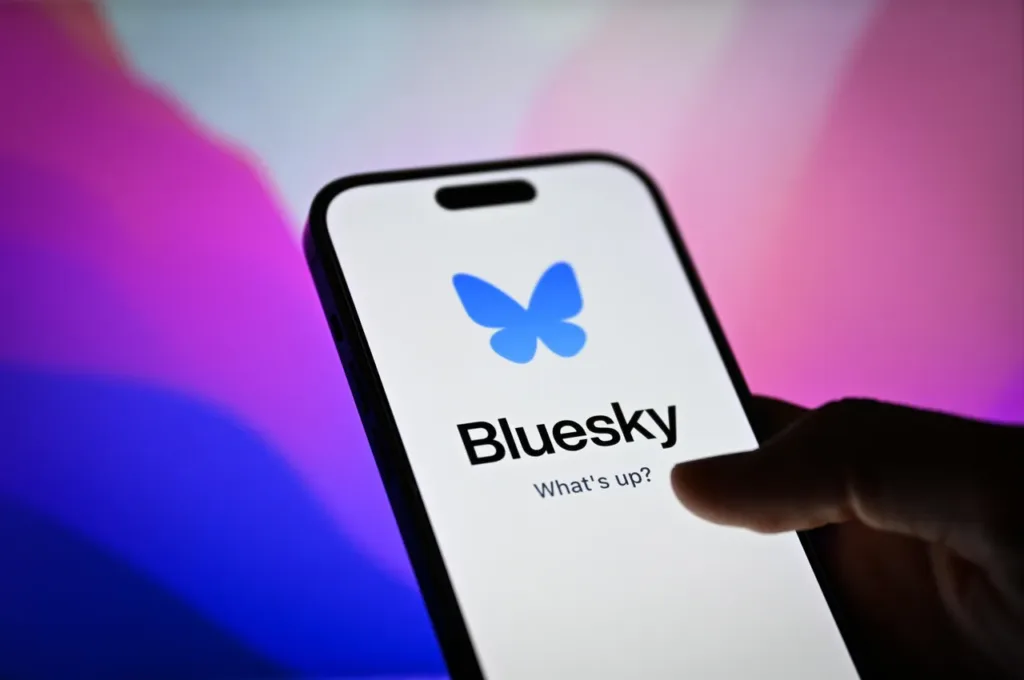You may have noticed the term “Bluesky” appearing frequently in your social media feeds and wondered what it’s all about. Bluesky is a new platform designed as an alternative to Elon Musk’s X (formerly Twitter), featuring similar colors and branding.
Bluesky is experiencing rapid growth, with nearly one million new sign-ups each day. Currently, it boasts 16.7 million members, but this number is likely to change by the time you read this.
So, why are so many people joining, and what exactly is Bluesky? The platform describes itself as “social media as it should be,” while maintaining a look reminiscent of other sites. Its interface includes a sidebar with options for the homepage, search, and notifications.
Users can like, comment, repost, and share their favorite content on Bluesky, functioning similarly to X. However, its primary distinction lies in its decentralized nature, which allows users to store their data on servers outside those operated by the company. As a result, users can sign up using pre-existing accounts rather than being required to create a new account with Bluesky’s branding. Most new members will likely have usernames that end in “.bsky.social.”
It’s worth noting that Bluesky resembles X because it was founded by Jack Dorsey, the former CEO of Twitter. He had envisioned Bluesky as a decentralized version of Twitter that wouldn’t be owned by any single person or organization. However, after resigning from the board in May 2024, Dorsey is no longer involved with the project and deactivated his account in September.
Currently, Bluesky operates as a U.S. public benefit corporation, led by CEO Jay Graber. Although it has been around since 2019, the platform was invitation-only until February of this year. This limited access allowed developers to address technical issues and stabilize the platform prior to a wider release.
Even with these preparations, the influx of new users in November has been so significant that outages remain a challenge. The surge in new users following Donald Trump’s victory in the U.S. elections in November is no coincidence. Elon Musk, the owner of X, has been a major supporter of Trump, likely influencing the political landscape.
As a result, a political divide has emerged, leading some individuals to quit X in protest. Publications like The Guardian have called X “a toxic media platform,” announcing their decision to cease posting there.
Meanwhile, Bluesky’s app continues to gain popularity worldwide, recently becoming the most downloaded free app in the UK’s Apple App Store. Celebrities such as pop artist Lizzo and Taskmaster host Greg Davies have indicated their desire to join Bluesky and limit or even stop using X. Other notable figures like Patton Oswalt, Jamie Lee Curtis, and Ben Stiller have made similar declarations.
While this surge in interest is significant, it will take time for Bluesky to truly compete with its microblogging rival. Although X does not disclose its total user count, estimates suggest it has hundreds of millions of users, with Elon Musk previously claiming the platform had 250 million daily users.
A key question remains: how will Bluesky sustain its operations? Initially funded by investors and venture capital firms, Bluesky has raised tens of millions of dollars. However, with the influx of new users, it must determine how to cover its expenses.
When Twitter was thriving, advertising accounted for the vast majority of its revenue. Bluesky, however, aims to avoid this model. Instead, it is exploring premium services, such as allowing users to pay for unique domains for their usernames. This would make usernames more distinctive; for instance, my username @twgerken.bsky.social could evolve into a more formal version like @twgerken.bbc.co.uk.
Proponents of this idea argue that requiring the platform’s owner to approve these unique usernames could also serve as a form of verification. If Bluesky continues to steer clear of advertising, its owners may eventually need to consider broader options, such as membership features, to maintain financial stability.
It’s not uncommon for tech companies to operate at a loss for extended periods. In fact, during its eight years as a publicly traded company, Twitter only reported profits twice before Elon Musk’s acquisition in 2022.
We all know how that turned out: Musk, the richest person in the world, spent $44 billion (£34.7 billion) to acquire Twitter, resulting in substantial returns for investors. Although Bluesky’s future remains uncertain, it still has the potential to succeed if it continues to grow.



